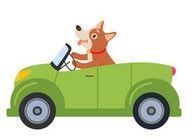How old should my child be before we get a pet?
Some experts recommend a child be at least 6 years old, but you are the best judge of your child’s maturity. At the very least, your child should exhibit self-control and understand and obey the word “no.” If you think your child is ready for a pet, introduce him or her to friends’ well-behaved pets to see how your child does.
Should we get a young animal or an older one?
Puppies and kittens are fragile, require extra time and care, and are prone to play-related scratching and biting. They might not be the most appropriate pet for a young child. Adopting a friendly, calm adult animal who has a known history of getting along with young children might be best. Talk to Tri-County Humane Society staff members for insights into an animal’s behavior with children.
What kind of dog is best with kids?
All dogs have the potential to bite, and a dog’s breed is only one of many factors that affect temperament and behavior. The best dogs for kids are those who receive proper socialization, humane training, exercise and attention, who are given adequate food, water, shelter and veterinary care, who are sterilized and who are safely confined.
How should my child interact with pets?
To protect both your child and your pet, it’s critical that you supervise all child-pet interactions. It’s also important to help your child see the world through your pet’s eyes: How would he or she feel if someone poked them or pulled at his/her ears? Explain that even the most docile of pets has limits, and all animals must be treated with caution and respect.
Pets might be upset by too much petting or stimulation. Teach your child to heed warning signs (hissing, lip curling, retreating and growling) that indicate the animal would rather be left alone.
Other people’s pets may feel and display discomfort if your child touches or even approaches them. Tell your child to get permission from an adult before touching another pet. Check out the instructions on how to avoid dog bites.
Animals in pain may lash out or bite anyone who tries to touch them. Teach your child to leave an injured pet alone and to notify an adult immediately.
Teach your kids not to scream and run around dogs. It may make them overly excited and even dangerous.
Dogs contained in yards or cars may try to protect their territory if approached. Teach your child not to tease or get close to them.
How can I help my pet feel safe?
Pets, like children, need time to adjust to new surroundings and circumstances. Provide pets with a place of their own where they can be away from the children. (Be careful about putting them in a yard unattended; they can be teased by neighborhood children.)
How can my kid help care for a pet?
Choose tasks appropriate for the age of the child. Even young children can be involved in some aspect of caring for an animal friend, such as selecting a new toy or color or carrying a food can.
How can I teach my kids to take good care of pets?
The best way to teach your children how to be responsible pet caregivers is to be one yourself. Start even before you get a pet – make sure you have realistic expectations about pet ownership. Take the right steps to select the right animal for your family at the right time. As soon as you bring a pet into your family, set up and enforce rules regarding proper pet care. (“Don’t pull the dog’s ears, tail, or other body parts.”) Insist they never tease, hit, or chase the pet. Teach children how to properly pick up, hold, and pet the animal. Ultimately, your children will learn how to treat animals – and people by watching how you treat the family pet.
Source: Pets for Life Behavior Series, adapted from Dumb Friends League in Denver, Colorado, and the Humane Society of the United States.








